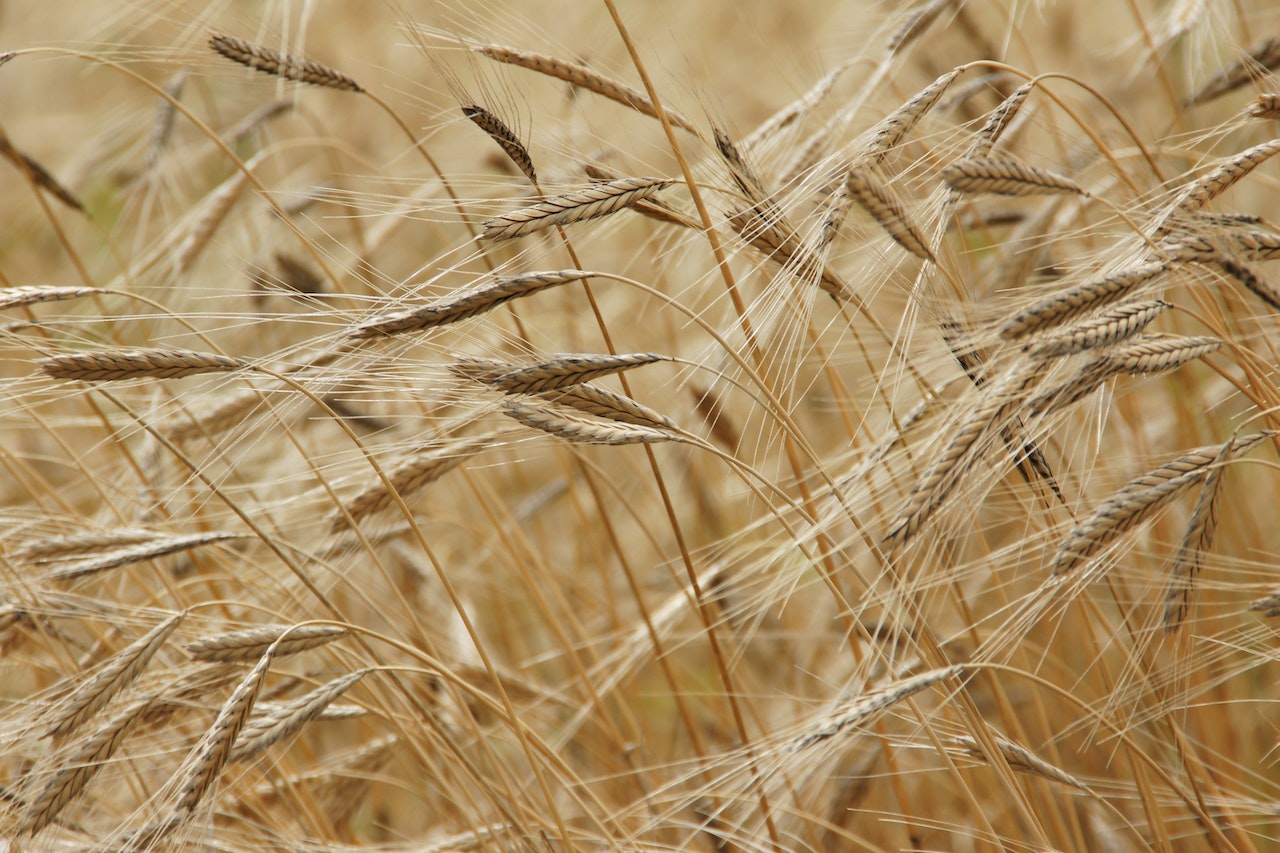What are grains?
The debate surrounding the healthiness of grains has been a topic of discussion for many individuals. Cereal grains, including wheat, rice, and corn, are widely consumed around the world, but there are varying opinions on their impact on health. While some view grains as an essential part of a nutritious diet, others argue that they can be detrimental. This article aims to provide a comprehensive review of grains, both whole and refined, based on scientific evidence, highlighting their potential benefits and downsides.
Grains, characterized as small, dry, and edible seeds, are cultivated on grass-like plants called cereals. They have played a significant role in human history and are considered a staple food in most countries. Wheat, for instance, was one of the first crops to be domesticated over 10,000 years ago in what is now known as the Middle East. In the present day, grain-based foods contribute to roughly half of the world’s caloric intake.
Among the commonly produced and consumed grains are corn, rice, and wheat. Additionally, barley, oats, millet, sorghum, and rye are also popular choices. It is worth mentioning that certain foods, such as quinoa and buckwheat, resemble grains in their preparation and consumption but are technically categorized as “pseudo-cereals.”
Grains are utilized in various food products, including bread, pasta, breakfast cereals, oatmeal, tortillas, pastries, cookies, chips, and crackers. Moreover, they are used to produce sweeteners like high fructose corn syrup and rice syrup, which are commonly added to packaged foods.
Whole vs. refined grains: What’s the difference?
When classifying grains, they can be categorized as either whole or refined. A whole grain comprises three main parts: the bran, germ, and endosperm. The bran, the outer layer of the grain, contains fiber, minerals, and antioxidants. The germ, the nutrient-rich core, consists of carbohydrates, fats, proteins, vitamins, minerals, antioxidants, and various phytonutrients. The germ is essentially the embryo of the plant, responsible for giving rise to a new plant. Lastly, the endosperm, the largest part of the grain, primarily contains carbohydrates in the form of starch and protein.
On the other hand, refined grains have undergone a process that removes the bran and germ, leaving only the endosperm. Consequently, refined grains contain fewer nutrients and less fiber, which is crucial for maintaining healthy digestion and other bodily functions. It is important to note that in the United States, refined grains are often enriched. This means that certain nutrients, such as B vitamins and iron, which are lost during the refining process, are added back to the grains. However, the process of enriching refined grains typically does not involve adding fiber back into the product.
While some grains, like oats and brown rice, are usually consumed in their whole form, others are commonly consumed in a refined state. Many grains are processed by removing the bran and germ and/or grinding them into flour. Foods made from refined wheat flour, such as pasta, white bread, and flour tortillas, are examples of refined grain products. Additionally, white rice, which has undergone the removal of the bran and germ, is a refined version of whole grain brown rice and is widely consumed.
Possible benefits of eating grains
The potential benefits of including grains in your diet are often discussed in relation to whole grains. Whole grains, unlike refined or enriched grains, retain the bran and germ, making them higher in fiber, beneficial compounds, and certain minerals.
Comparing whole wheat flour to enriched white flour, for instance, the former contains more protein, fiber, zinc, manganese, and phosphorus. However, enriched white flour tends to have higher levels of B vitamins. Additionally, whole grains contain higher amounts of phenolic acids, which are plant compounds known for their antioxidant properties and potential anti-inflammatory and anticancer effects, among other benefits. The bran of whole grains, such as wheat, is particularly rich in these phenolic acids.
Studies on whole grains and health
The higher fiber and phenolic acid contents in whole grains are the primary reasons they are considered healthier than refined grains. These components are likely responsible for the associated health benefits. Research has shown a variety of potential health advantages linked to the consumption of whole grains.
Longevity: Large observational studies have indicated that each serving of whole grains consumed is associated with a 9% lower risk of death from heart disease over the study period.
Weight management: Increasing whole grain intake is associated with lower body weights. The fiber in whole grains may contribute to reduced hunger and increased satiety, leading to lower calorie intake.
Type 2 diabetes prevention: Individuals who consume more whole grains tend to have a lower risk of developing type 2 diabetes.
Heart disease protection: Whole grains may offer protection against heart disease. A review of 45 studies found that consuming three servings (90 grams) of whole grains per day is associated with a 22% reduction in heart disease risk and a 12% reduction in stroke risk.
Colorectal cancer prevention: One large observational study found that individuals with the highest intake of whole grains had a 16% lower incidence of colorectal cancer compared to those with the lowest intake.
It’s important to note that most of these studies are observational, establishing a correlation between whole grain consumption and better health outcomes, but not proving that whole grains are the definite cause of these benefits.
However, there are also randomized controlled trials, considered to be more accurate, that have demonstrated the positive effects of whole grains. These trials have shown that whole grains may improve various health markers, including inflammation levels, heart disease risk, and body fat levels.
While the evidence suggests potential benefits of incorporating whole grains into your diet, it’s crucial to remember that individual responses may vary. It’s always advisable to consult with a healthcare professional or registered dietitian to determine the best dietary choices for your specific needs and health goals.
Whole vs. refined grains: What’s the difference?
When it comes to grains, there are two main categories: whole grains and refined grains. Understanding the difference between these two types can help you make informed choices about the foods you consume.
Whole grains consist of three key parts: the bran, germ, and endosperm. The bran is the outer layer of the grain, and it contains important nutrients like fiber, minerals, and antioxidants. The germ is the core of the grain and is packed with carbohydrates, fats, proteins, vitamins, minerals, antioxidants, and various phytonutrients. It’s essentially the part of the grain that gives birth to a new plant. Lastly, the endosperm is the largest part of the grain, containing mostly carbohydrates in the form of starch and protein.
On the other hand, refined grains undergo a process that removes the bran and germ, leaving only the endosperm. As a result, refined grains have lower levels of fiber, an essential nutrient for healthy digestion and overall well-being, as well as fewer nutrients compared to whole grains.
However, it’s worth noting that in the United States, refined grains are often enriched. This means that certain nutrients, such as B vitamins and iron, which are lost during the refining process, are added back to the grains. While enrichment helps restore some of the lost nutrients, fiber is typically not reintroduced to refined grains.
Different grains are consumed in different forms. For example, oats and brown rice are commonly eaten in their whole form, preserving all parts of the grain. On the other hand, many grains are processed to remove the bran and germ and are often milled into flour before being used in various food products.
A few examples of foods made from refined grains include pasta, white bread, and flour tortillas, all of which are typically made from white flour derived from refined wheat. Another popular example is white rice, which has undergone the removal of the bran and germ. It is the refined version of whole grain brown rice.
Understanding the distinction between whole and refined grains can help you make healthier choices for your diet. While whole grains provide a wealth of nutrients and fiber, refined grains have undergone processing that removes important components, resulting in a lower nutritional value. However, enriched refined grains can help mitigate some nutrient loss. Consider opting for whole grain options like whole wheat bread, brown rice, and oats whenever possible to reap the benefits of their nutritional content.
Possible benefits of eating grains
Grains, such as wheat, rice, and corn, are widely consumed around the world. However, there has been ongoing debate regarding the health implications of consuming grains. While some people view grains as an essential component of a healthy diet, others believe that they can be detrimental to health. To shed light on this topic, let’s explore the differences between whole grains and refined grains and delve into the potential benefits of including grains in our diet.
Whole grains are grains that have not undergone the process of removing the bran and germ, which are the outer layers of the grain. As a result, whole grains retain their fiber content, minerals, and antioxidants. The bran, in particular, contains phenolic acids, which are potent antioxidants with anti-inflammatory and potentially anticancer effects. Whole grains are also higher in fiber, zinc, manganese, and phosphorus compared to refined and enriched grains. On the other hand, refined grains have had the bran and germ removed, leaving only the endosperm, which contains mostly carbohydrates and protein. While enriched grains have some nutrients added back after processing, they still lack the fiber present in whole grains.
The higher fiber and phenolic acid content of whole grains are the main reasons why they are considered healthier than refined grains. The fiber in whole grains can help promote healthy digestion, reduce hunger, and increase satiety, which may contribute to maintaining a healthy weight. Moreover, the phenolic acids found in whole grains act as antioxidants and have potential anti-inflammatory properties.
Studies on whole grains and health
Numerous studies have explored the potential health benefits associated with consuming whole grains. Observational studies have shown a lower risk of death from heart disease with each serving of whole grains consumed. Additionally, higher consumption of whole grains has been linked to lower body weights, a reduced risk of type 2 diabetes, and a decreased risk of heart disease and stroke. There is also evidence suggesting a lower incidence of colorectal cancer in individuals with a high intake of whole grains.
While most of these studies are observational and cannot definitively establish a cause-and-effect relationship, randomized controlled trials have also demonstrated the benefits of whole grains. These trials have shown improvements in various health markers, such as inflammation levels, heart disease risk, and body fat levels.




